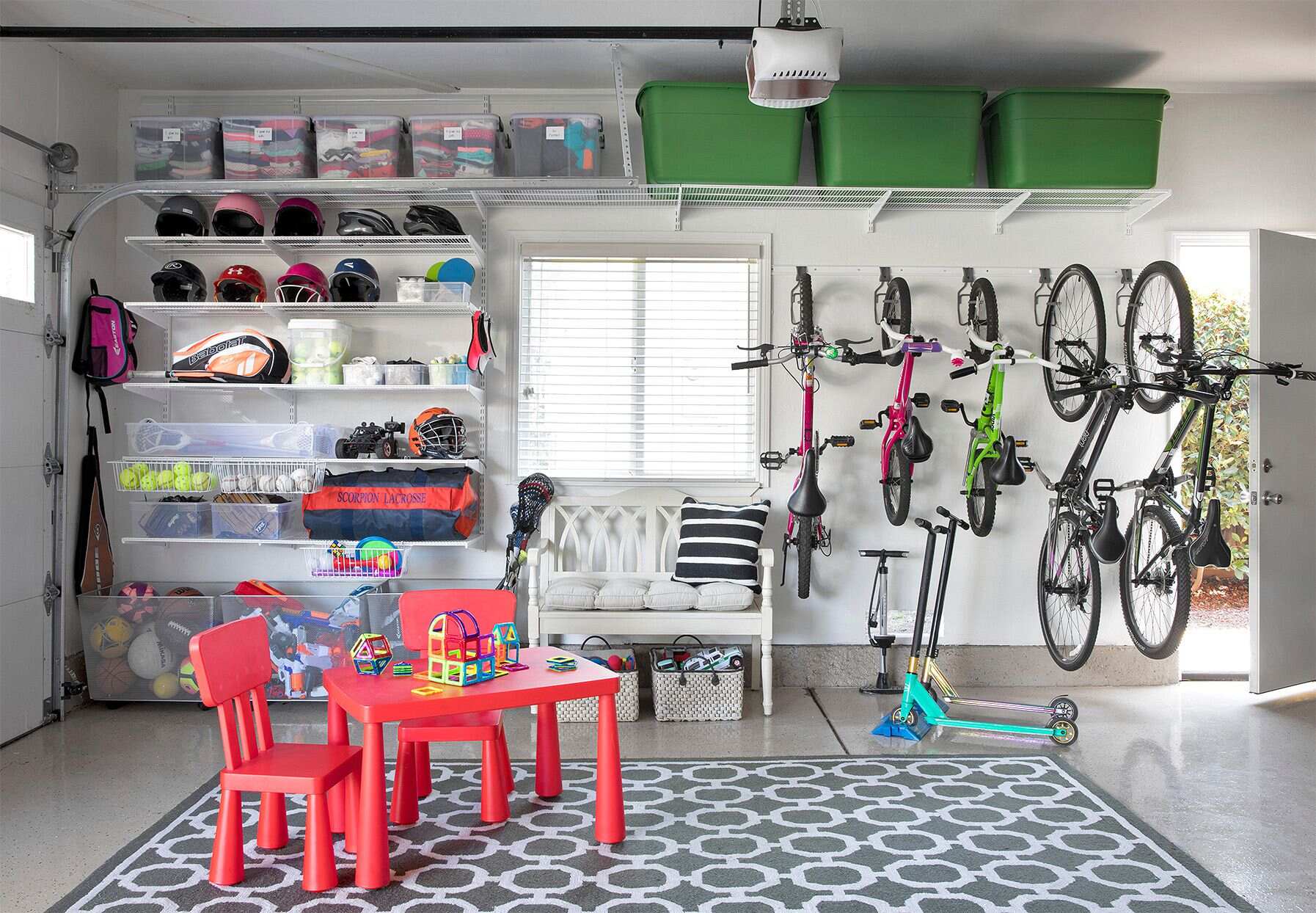

Articles
How To Store Bikes In Garage
Modified: January 7, 2024
Learn effective ways to store bikes in the garage with these informative articles. Discover space-saving solutions and tips for proper bike storage.
(Many of the links in this article redirect to a specific reviewed product. Your purchase of these products through affiliate links helps to generate commission for Storables.com, at no extra cost. Learn more)
Introduction
Do you love cycling but find yourself struggling with storage space for your bikes in the garage? The garage is often a convenient and secure location to store bikes, but without proper organization, it can quickly become cluttered and difficult to navigate. Having a designated storage system not only keeps your bikes safe and protected, but it also maximizes available space and makes them easily accessible for your next ride.
In this article, we will explore various methods and tips for storing bikes in the garage. From assessing your garage space to choosing storage options and ensuring bike security, we will cover everything you need to know to create an efficient and organized bike storage system in your garage.
Let’s get started!
Key Takeaways:
- Efficient bike storage in the garage involves assessing space, clearing clutter, and choosing the right storage options. Creating designated bike storage zones and ensuring bike security are essential for a well-organized and secure garage.
- Proper bike maintenance, including cleaning, lubrication, and regular inspections, is crucial for extending the lifespan of your bikes and ensuring a safe and enjoyable riding experience. By following these tips, you can efficiently store and maintain your bikes in the garage.
Read more: How To Store Bike Rack In Garage
Assessing Garage Space
Before diving into the world of bike storage, it’s essential to assess the available space in your garage. Understanding the dimensions and layout will help you determine the most efficient storage options for your bikes.
Begin by measuring the height, width, and depth of your garage. This will give you a clear idea of how much space you have to work with. Take note of any obstacles such as shelving units, cabinets, or vehicles that may limit the available space for bike storage.
Next, consider how many bikes you need to store. If you have multiple bikes, take into account the dimensions of each bike, including handlebars, pedals, and any accessories attached. This will ensure that the storage solution you choose can accommodate all of your bikes comfortably.
Once you have a solid understanding of your garage space and the number of bikes you have, consider the traffic flow in your garage. Do you need to access other items or equipment regularly? Will you need space to walk around your bikes? Understanding how your garage functions will help you determine the most suitable location for your bike storage.
Remember, the goal is to optimize space while maintaining convenience and accessibility for your bikes. With a clear understanding of your garage dimensions, bike count, and traffic flow, you can begin exploring storage options that best fit your needs.
Clearing Out Clutter
Before you can effectively store your bikes in the garage, it’s crucial to clear out any unnecessary clutter or items that may be taking up space. This step will not only create more room for your bikes but also make it easier to organize and maintain your storage area.
Start by decluttering your garage and removing any items that are no longer needed or used. Sort through your belongings and categorize them into three groups: keep, donate/sell, and dispose of. Be ruthless in your decision-making process and only keep items that are essential or hold sentimental value.
Once you have identified the items to keep, find appropriate storage solutions for them. This may involve installing shelving units, cabinets, or hooks to efficiently store tools, sporting equipment, and other belongings. By providing designated storage areas for these items, you can create a more organized and spacious environment for your bikes.
Remember to properly dispose of any items that are no longer useful. Recycle or donate items that are in good condition and dispose of any broken or damaged items responsibly.
Clearing out clutter is an important step in creating an optimized space for bike storage. By removing unnecessary items and properly organizing the remaining belongings, you can ensure that your garage is clean, functional, and ready to accommodate your bikes.
Choosing Storage Options
When it comes to storing bikes in the garage, there are several options to consider. The best choice will depend on factors such as the available space, the number of bikes, and personal preference. Let’s explore some popular storage options:
Wall-Mounted Bike Racks:
Wall-mounted bike racks are a popular choice for storing bikes in the garage. These racks are attached to the wall and hold the bikes horizontally, keeping them off the floor and utilizing vertical space. Wall-mounted racks come in various styles, including single bike hooks, multiple bike racks, and even customizable options for larger bike collections.
Read more: How To Store Electric Bikes In Garage
Ceiling-Mounted Bike Hoists:
If you have limited floor space in your garage, ceiling-mounted bike hoists are a fantastic option. These hoists allow you to suspend your bikes from the ceiling, freeing up valuable floor space. With a pulley system, you can effortlessly raise and lower your bikes for easy access.
Floor Stands and Hooks:
If wall or ceiling-mounted options are not feasible, floor stands and hooks provide a practical alternative. Floor stands, such as bike racks or stands, hold your bikes upright and can be easily moved to accommodate changes in space. Hooks can be attached to the wall, allowing you to hang your bikes vertically. Both options keep your bikes organized and accessible without the need for installation.
When choosing storage options, consider factors such as the weight-bearing capacity, ease of installation, and compatibility with your bike type. Additionally, consider the aesthetics of the storage solution and how it aligns with the overall design of your garage.
Remember to assess your individual needs and preferences when selecting bike storage options. Experiment with different solutions and find the one that best fits your garage layout and bike storage requirements.
Wall-Mounted Bike Racks
Wall-mounted bike racks are a popular and practical option for storing bikes in the garage. They utilize vertical space and keep your bikes off the floor, allowing for efficient use of limited garage space. Wall-mounted bike racks come in various styles and designs, making it easy to find one that suits your needs and preferences.
Single Bike Hooks:
A simple and straightforward option is using single bike hooks. These hooks are mounted on the wall, allowing you to hang each bike individually. They are space-saving and can be installed at different heights to accommodate different bike sizes. Single bike hooks are a great choice if you have limited wall space or only need to store a few bikes.
Read more: How To Store Bikes
Multiple Bike Racks:
If you have multiple bikes to store, a multiple bike rack is a convenient solution. These racks typically feature arms or hooks that can hold two or more bikes horizontally. They efficiently utilize wall space and keep your bikes organized side-by-side. Some multiple bike racks even include additional storage options, such as hooks for helmets or baskets for accessories.
Customizable Options:
If you have a large bike collection or unique storage requirements, consider customizable wall-mounted bike racks. These racks allow you to create a customized storage solution by combining different components. You can mix and match hooks, racks, and shelves to fit your specific needs. This versatility is especially helpful if you have bikes with varying sizes or styles.
When installing wall-mounted bike racks, it’s important to ensure that they are securely mounted to the wall. Use appropriate mounting hardware, such as screws or bolts, to guarantee stability. Consider the weight-bearing capacity of the racks and make sure they can support the combined weight of your bikes.
Wall-mounted bike racks not only keep your bikes organized and easily accessible, but they also serve as a visual display, showcasing your collection. They are a practical and space-saving solution for bike storage in the garage, allowing you to maximize your available space.
Ceiling-Mounted Bike Hoists
If you have limited floor space in your garage, ceiling-mounted bike hoists are an excellent option for storing bikes. These hoists utilize the vertical space in your garage by suspending your bikes from the ceiling, keeping them safely out of the way. Ceiling-mounted bike hoists are easy to use and provide convenient access to your bikes when needed.
Pulley System:
Ceiling-mounted bike hoists typically feature a pulley system that allows you to raise and lower your bikes with ease. The pulley system is designed to effortlessly lift the bikes off the ground, eliminating the need for heavy lifting. By utilizing a pulley, you can effectively store your bikes near the ceiling, creating more available space on the floor.
Read more: How To Store A Bike
Weight Capacity:
When installing a ceiling-mounted bike hoist, it’s important to check the weight capacity of the hoist and ensure it can safely support the combined weight of your bikes. Different hoists have varying weight capacities to accommodate different bike sizes and styles. Be sure to consider the weight of your heaviest bike when selecting a hoist.
Installation:
Installing a ceiling-mounted bike hoist requires securing the hoist to the ceiling joists. It is essential to follow the manufacturer’s instructions and use the appropriate mounting hardware. Ensure that the hoist is properly anchored to provide a secure and stable storage solution for your bikes.
Space Efficiency:
Ceiling-mounted bike hoists are particularly beneficial for garages with limited floor space. By storing your bikes near the ceiling, you can free up valuable space on the ground, making it easier to maneuver or store other items in your garage. This is especially useful if you have multiple bikes or if you need to park a car or other larger equipment in the garage.
Ceiling-mounted bike hoists offer a practical and space-saving solution for bike storage in the garage. They keep your bikes secure and out of the way while providing easy access whenever you’re ready for your next ride. Install a ceiling-mounted bike hoist to maximize the use of vertical space and create a more organized and efficient garage storage system.
Floor Stands and Hooks
If wall or ceiling-mounted options are not feasible for your garage, floor stands and hooks provide a practical and versatile solution for storing bikes. These options allow you to keep your bikes upright and accessible, without the need for installation or permanent fixtures. Let’s explore the benefits of floor stands and hooks:
Read more: How To Store An Electric Bike
Bike Racks:
A floor bike rack is a freestanding option that holds your bikes upright. These racks often feature multiple slots or arms to accommodate multiple bikes. They are easy to assemble and can be moved around as needed. Floor bike racks are a great choice if you have a larger garage or if you frequently need to change the positioning of your bikes.
Bike Stands:
Bike stands are another type of floor-mounted storage option. These stands typically consist of a triangular or A-shaped frame that you lean your bike against. The stand supports your bike, keeping it stable and upright without the need for any attachments or mounting. Bike stands are compact, portable, and can be easily stored when not in use. They are an excellent choice for smaller garages or when you have limited floor space.
Wall-Mounted Hooks:
If you have wall space available, wall-mounted hooks provide a simple and effective storage solution. These hooks are attached to the wall, allowing you to hang your bikes vertically. Wall-mounted hooks are space-saving and can be easily installed at different heights to accommodate different bike sizes. They are a great option if you want to keep your bikes off the ground and utilize wall space for storage.
Both floor stands and hooks offer a flexible and convenient way to store your bikes in the garage. They require minimal installation, allowing for easy setup and repositioning as needed. Whether you choose a freestanding floor rack, a compact bike stand, or wall-mounted hooks, these options will keep your bikes organized and easily accessible for your next ride.
Creating Bike Storage Zones
Creating dedicated bike storage zones in your garage is a smart and efficient way to keep your bikes organized and easily accessible. By designating specific areas for bike storage, you can maximize space utilization, maintain a tidy garage, and create a system that works for you. Here are some tips for creating effective bike storage zones:
Read more: How To Store Mountain Bike
Zoning Strategy:
Begin by assessing your garage layout and determining the most suitable areas for bike storage zones. Consider factors such as available wall space, ceiling height, and accessibility. Choose locations that allow for easy entrance and exit, ensuring that you can easily maneuver your bikes without any obstructions.
Grouping Bikes:
If you have multiple bikes, it’s helpful to group them based on frequency of use or family members. This allows you to allocate space and storage solutions accordingly. For example, you might have a zone specifically for children’s bikes or a zone for bikes that are used most frequently. This way, you can easily locate the bike you need without any hassle.
Utilizing Vertical Space:
Maximize storage capacity by utilizing vertical space in your garage. Wall-mounted bike racks or hooks are excellent options for utilizing wall space efficiently. Consider installing racks or hooks at different heights to accommodate various bike sizes. Ceiling-mounted hoists are also a great solution for freeing up valuable floor space and maximizing vertical storage.
Labeling and Signage:
Consider labeling each bike storage zone to help identify different areas at a glance. This can be done with simple labels or even color-coded markings. Additionally, adding signage indicating the specific zone can further enhance organization and ease of use.
Read more: How To Store Bikes In A Shed
Clear Pathways:
Ensure that your bike storage zones allow for clear pathways and easy navigation. Avoid placing bikes in areas where they obstruct walkways or open doors. This will not only improve the safety and accessibility of your garage but also facilitate easy access to other items stored in the garage.
By creating bike storage zones in your garage, you can efficiently allocate space for your bikes and maintain an organized environment. Remember to assess your garage layout, group your bikes, utilize vertical space, label the zones, and ensure clear pathways. With a well-organized bike storage system, you’ll have easy access to your bikes whenever you’re ready to hit the road.
Ensuring Bike Security
Keeping your bikes secure is essential to protect your investments and give you peace of mind. Here are some key considerations to ensure bike security in your garage:
Locking Mechanisms:
Invest in high-quality bike locks to secure your bikes within the garage. Use a sturdy U-lock or heavy-duty chain lock to secure the frame of each bike to an immovable object, such as a bike rack or wall. It’s also a good idea to use a secondary cable lock to secure the wheels and other detachable parts.
Garage Security Measures:
Ensure that your garage itself is secure. Install sturdy locks on the garage doors and windows to prevent unauthorized access. If your garage has a connecting door to the main house, make sure it is also secure with a deadbolt lock. Consider installing security cameras or an alarm system to further deter potential thieves.
Read more: How To Store Bike In Apartment
Visibility:
Keep your bikes away from prying eyes by ensuring they are not easily visible from outside the garage. Use curtains or blinds on windows or consider covering them with a tarp or bike cover. This will prevent potential thieves from identifying valuable items inside the garage.
Lighting:
Well-lit spaces can deter theft and enhance security. Install good lighting in your garage, both inside and outside. Motion sensor lights are particularly effective in illuminating the area when someone approaches. Adequate lighting reduces the chances of burglaries and improves safety when accessing and storing your bikes.
Security Marking:
Consider marking your bikes with a unique identifier, such as a serial number or your initials. This can deter theft and help with identification and recovery in case of theft. Additionally, register your bikes with local law enforcement or online databases to increase the chances of recovery if they are stolen.
Insurance Coverage:
Check your homeowner’s or renter’s insurance policy to see if it covers theft or damage of your bikes. If not, consider adding supplementary coverage specifically for your bikes. Insurance provides financial protection in case of theft or any unforeseen incidents.
By taking these security measures, you can protect your bikes from theft and unauthorized access in your garage. Remember to invest in good locks, secure the garage itself, ensure visibility is limited, maintain proper lighting, consider security marking, and review your insurance coverage. With these precautions in place, you can enjoy peace of mind knowing that your bikes are safe and secure in your garage.
Read more: How To Store Bikes In An Apartment
Proper Bike Maintenance
Maintaining your bikes is essential for their longevity and optimal performance. Regular maintenance not only extends the lifespan of your bikes but also ensures a safe and enjoyable riding experience. Here are some key aspects of proper bike maintenance:
Cleaning:
Regularly clean your bikes to remove dirt, debris, and grime that can accumulate during rides. Use a mild detergent and water to clean the frame, wheels, and drivetrain. Pay special attention to the chain, gears, and brakes. After cleaning, thoroughly dry the bike to prevent rust and corrosion.
Lubrication:
Apply lubrication to the chain, gears, and other moving parts of your bike. This reduces friction, improves shifting, and prevents rust. Use a bike-specific lubricant and follow the manufacturer’s instructions for proper application. Avoid using excessive amounts of lubricant, as it can attract dirt and debris.
Tire Maintenance:
Regularly check the tire pressure and inflate them to the recommended PSI (pounds per square inch) as indicated on the sidewall. Inspect the tires for any signs of wear or damage. Replace worn or damaged tires promptly to ensure safe rides. Additionally, be mindful of the tread condition and consider replacing the tires if they are excessively worn.
Read more: How To Store Bike Outside
Brake Adjustment and Inspection:
Ensure your brakes are in good working condition for safe riding. Regularly check the brake pads for wear and replace them if necessary. Adjust the brake cables to ensure optimal brake performance and responsiveness. Test the brakes periodically to confirm they are engaging and releasing smoothly.
Gear Adjustment:
Check the shifting mechanism and adjust the gears if needed. Ensure the chain moves smoothly between the gears without skipping or jamming. Fine-tuning the gear adjustment will improve shifting precision and reduce unnecessary strain on the drivetrain.
Suspension and Fork Maintenance:
If your bike has suspension or a front fork, regular maintenance and inspection are crucial. Follow the manufacturer’s guidelines for checking and adjusting air pressure, oil levels, and seals. Regularly clean and lubricate the suspension components to ensure optimal performance and longevity.
Regular Inspections:
Periodically inspect your bike for any signs of wear, damage, or loose components. Check for loose bolts, cracks in the frame, worn-out cables, or any other issues that may affect the safety and performance of your bike. Address any problems promptly to prevent further damage and ensure safe rides.
By following these bike maintenance practices, you can keep your bikes in excellent condition and extend their lifespan. Regular cleaning, lubrication, tire maintenance, brake adjustment, gear adjustment, suspension maintenance, and regular inspections will ensure optimal performance and a safe riding experience. Remember to refer to your bike’s user manual or seek professional assistance for any maintenance tasks that you are not comfortable performing yourself.
Read more: How To Store A Mountain Bike
Conclusion
Storing bikes in the garage doesn’t have to be a challenge. With proper organization and the right storage solutions, you can create a functional and efficient space for your bikes. Assessing your garage space, clearing out clutter, and choosing the right storage options are crucial first steps.
Wall-mounted bike racks, ceiling-mounted bike hoists, floor stands, and hooks offer various options to maximize space utilization. Creating designated bike storage zones helps to keep your garage organized and easily accessible. It’s important to ensure bike security by using locking mechanisms, securing the garage itself, and maintaining visibility and lighting.
Proper bike maintenance is key to prolonging the lifespan of your bikes and enhancing your riding experience. Regular cleaning, lubrication, tire maintenance, brake adjustment, gear adjustment, suspension maintenance, and inspections are all essential to keep your bikes in excellent condition.
In conclusion, by following the tips outlined in this article, you can store your bikes in the garage efficiently, keep them secure, and ensure their longevity. A well-organized and maintained bike storage system not only protects your valuable investment but also makes it easier for you to enjoy your rides without any hassle.
So, take the time to assess your garage space, choose the right storage options, create storage zones, implement security measures, and perform regular maintenance on your bikes. With these steps, you’ll have a garage that is not only functional but also showcases your love for cycling.
Frequently Asked Questions about How To Store Bikes In Garage
Was this page helpful?
At Storables.com, we guarantee accurate and reliable information. Our content, validated by Expert Board Contributors, is crafted following stringent Editorial Policies. We're committed to providing you with well-researched, expert-backed insights for all your informational needs.
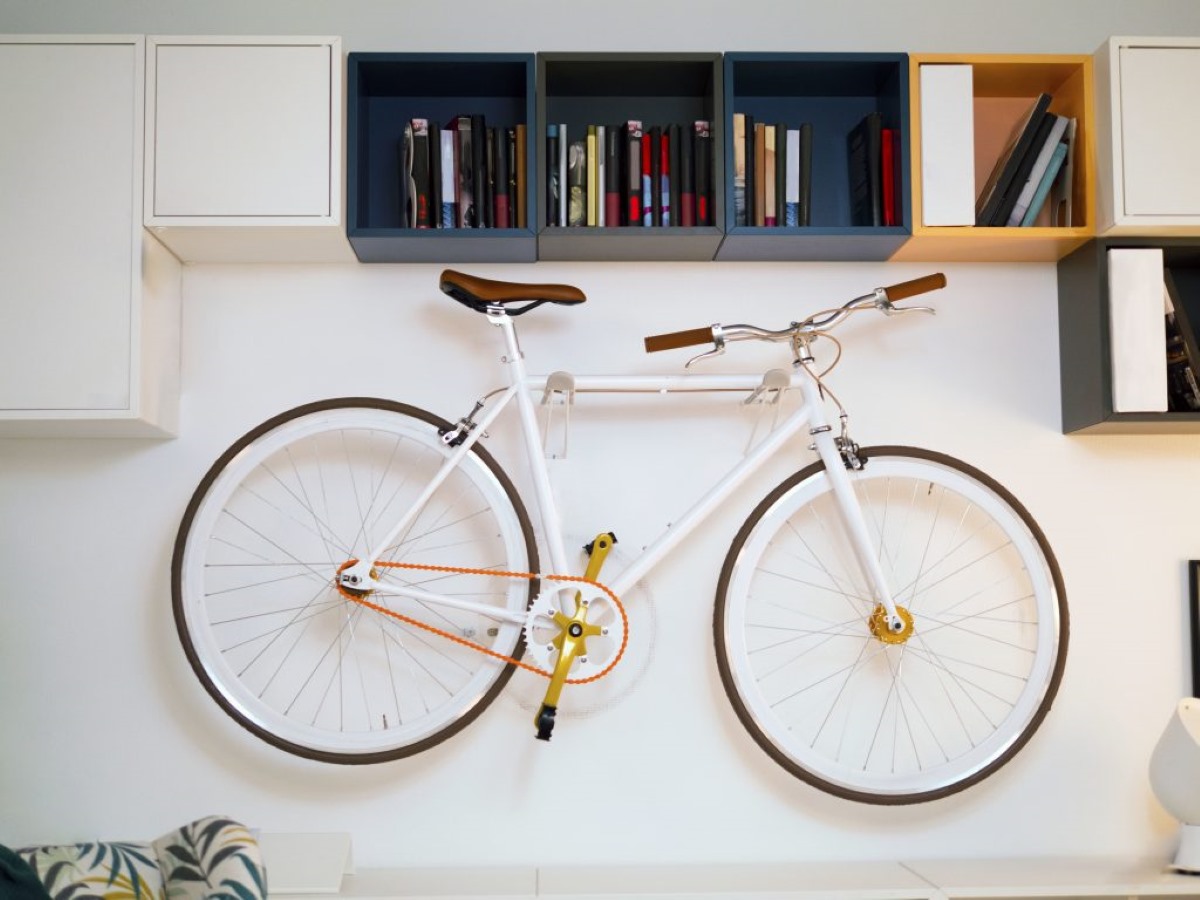
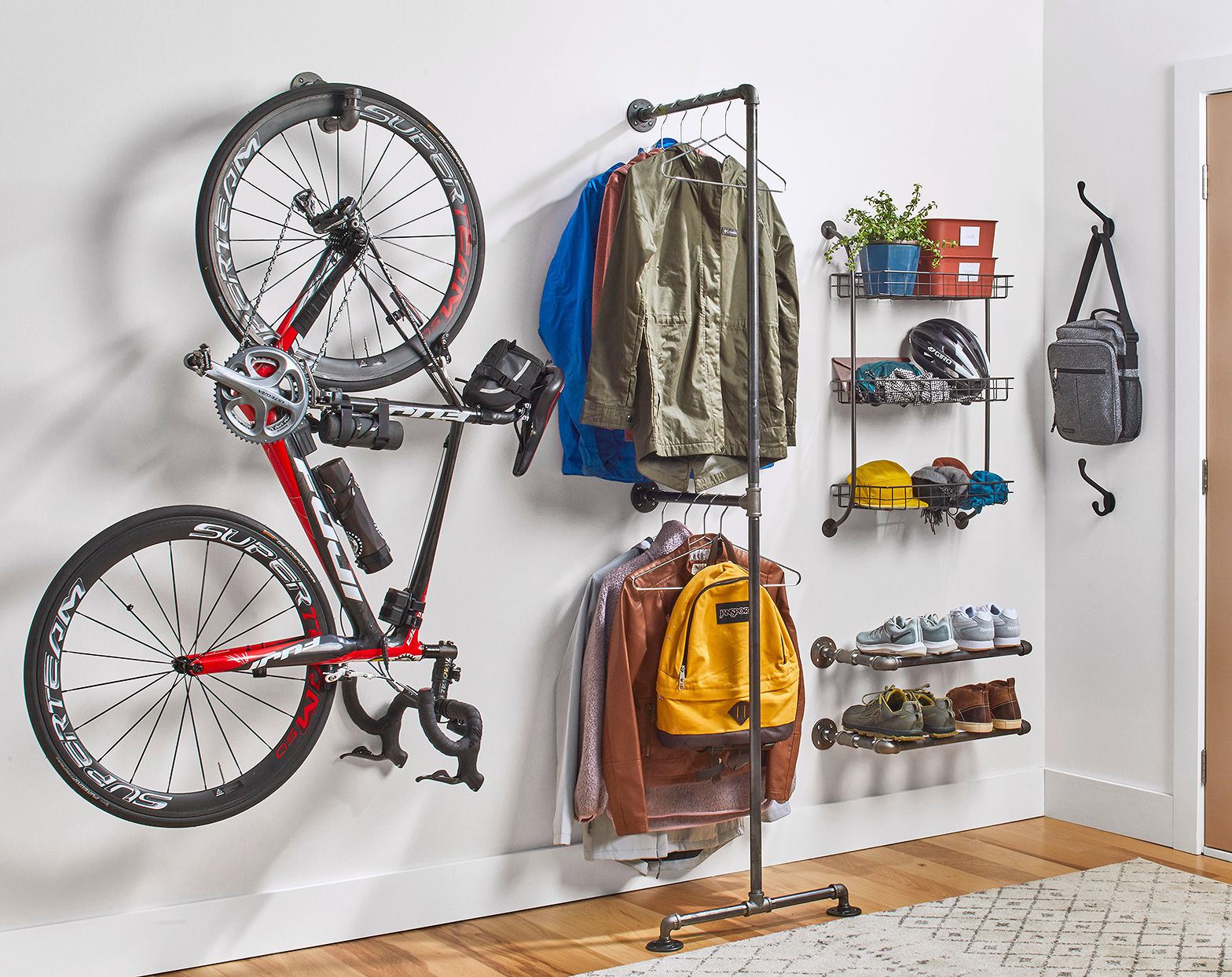
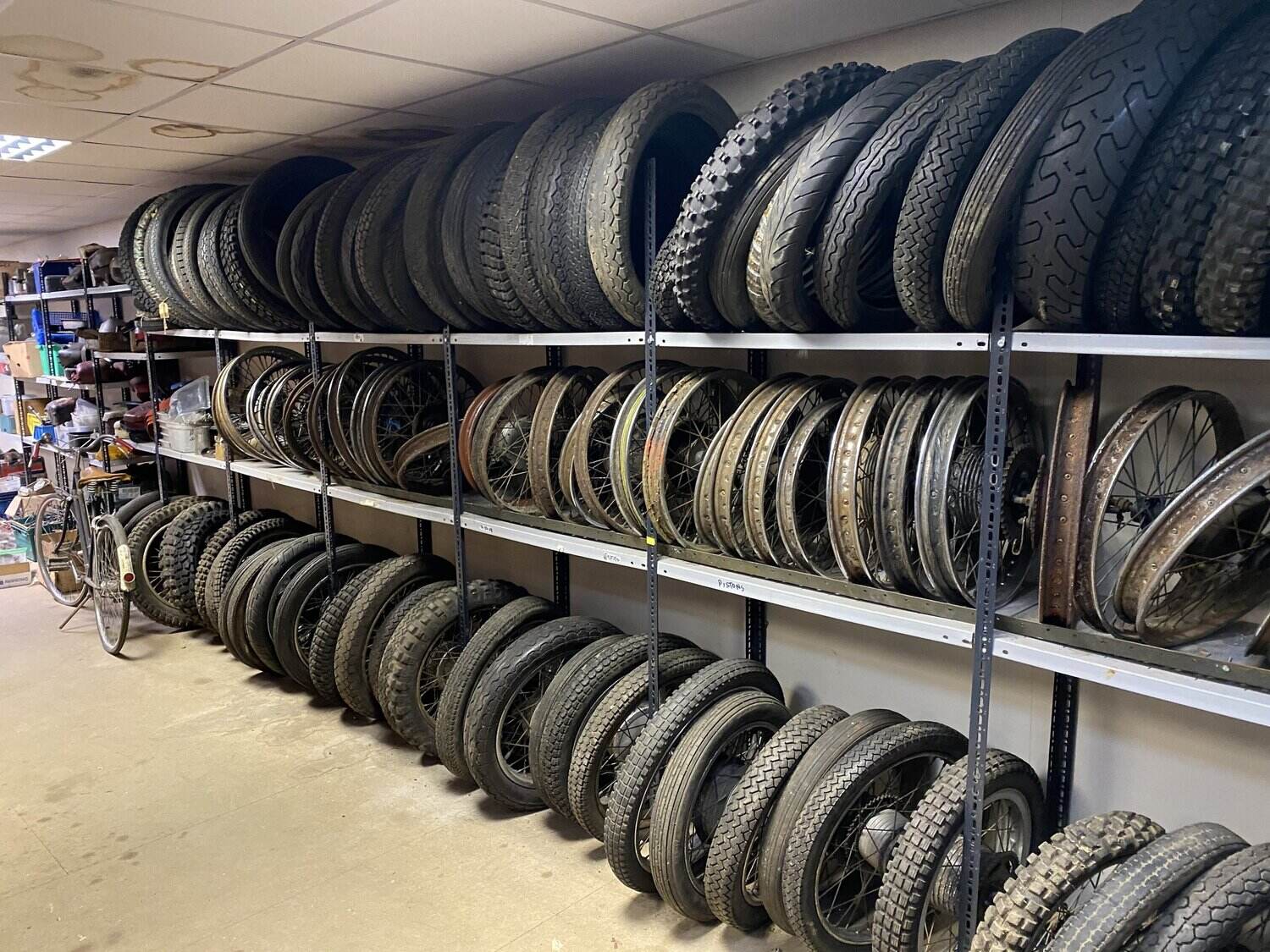
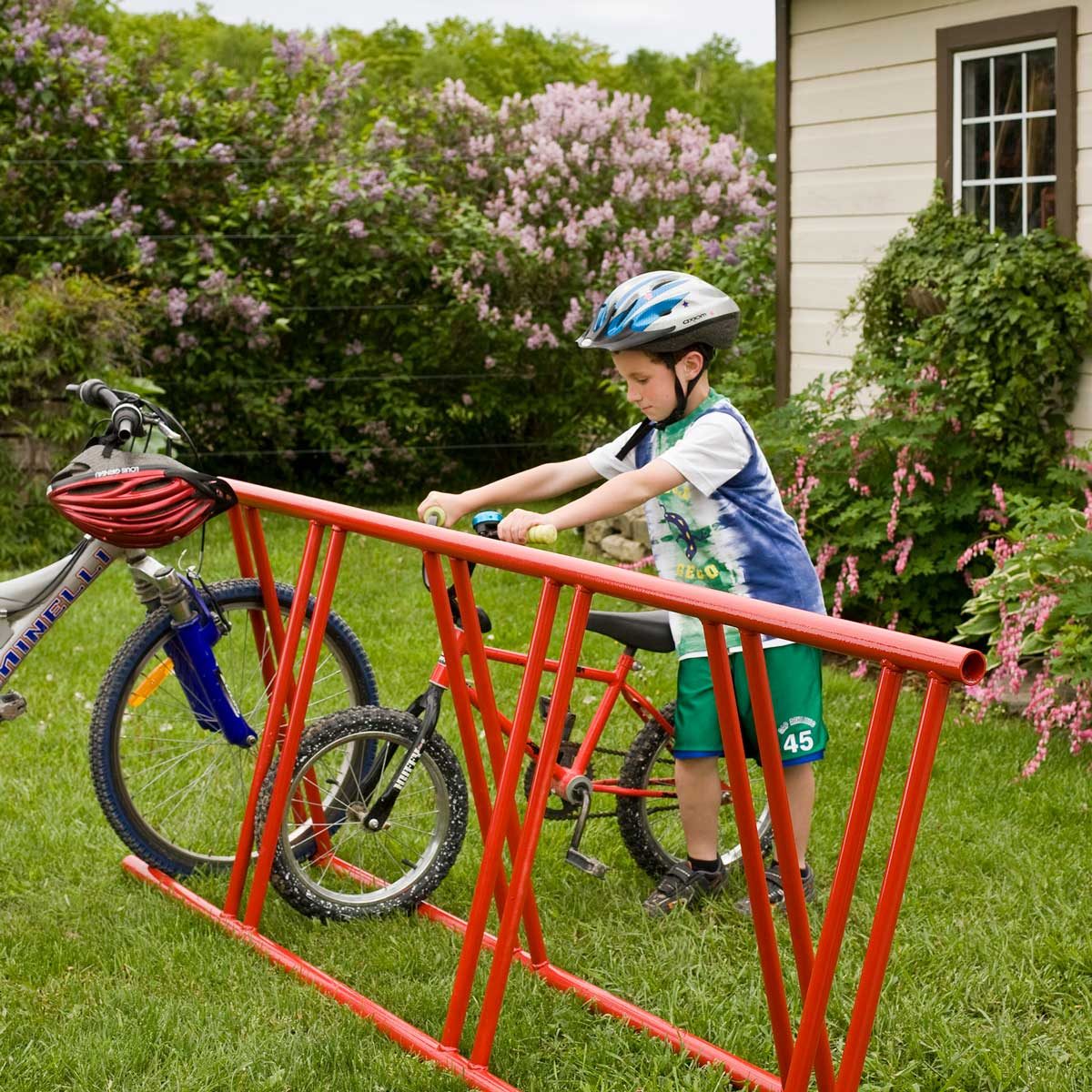
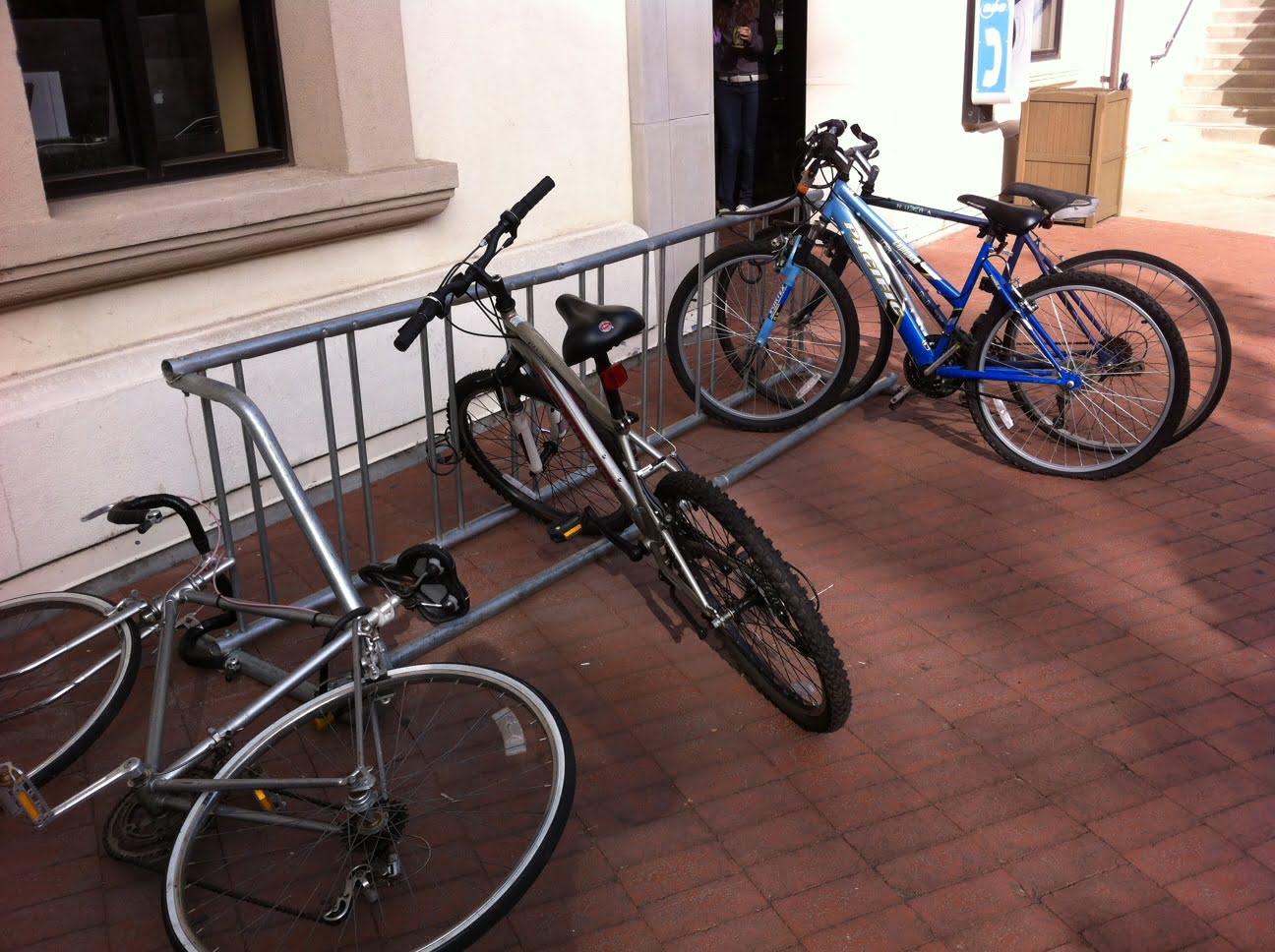

0 thoughts on “How To Store Bikes In Garage”